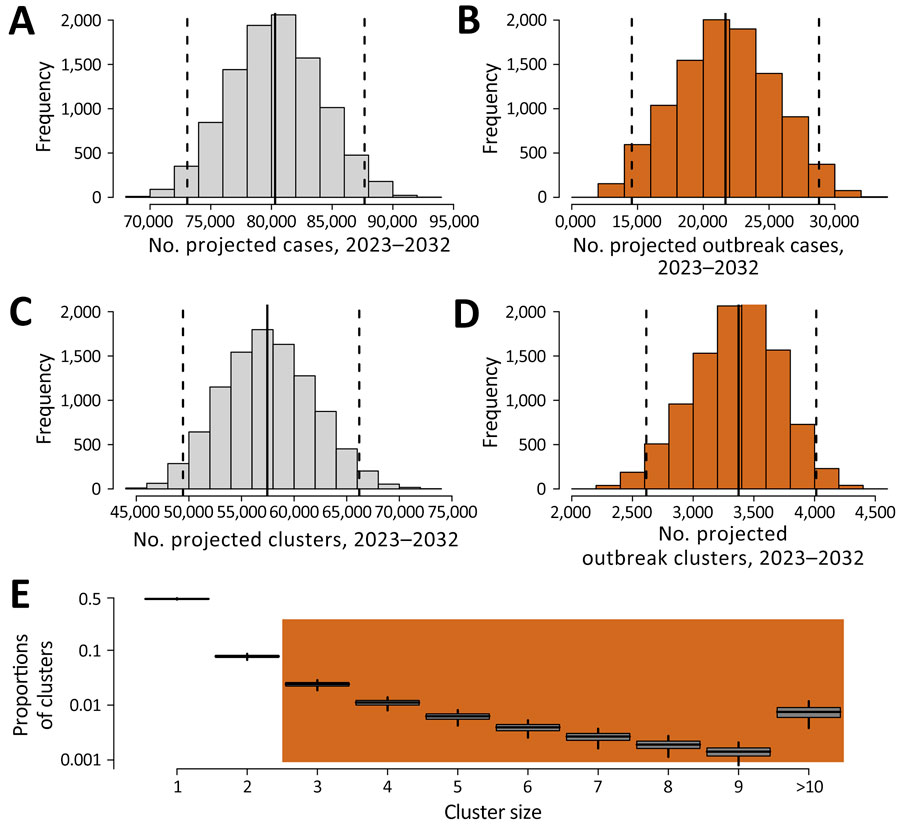Volume 31, Number 3—March 2025
Research
Model-Based Analysis of Impact, Costs, and Cost-effectiveness of Tuberculosis Outbreak Investigations, United States
Figure 1

Figure 1. Projected TB cases and outbreaks, 2023–2032, United States, in study of impact, costs, and cost-effectiveness of TB outbreak investigations. Shown are the total number of TB cases (A), the number of TB cases occurring in outbreaks (B), the total number of TB clusters (C), and the number of TB outbreaks (i.e., clusters of >3 cases) (D) projected to occur during 2023–2032 and cluster size distributions of the TB clusters (E). Clusters of size 1 are assumed to have no transmission links, and only clusters with >3 cases (shaded in orange) are investigated in outbreak investigations.
Page created: January 17, 2025
Page updated: February 28, 2025
Page reviewed: February 28, 2025
The conclusions, findings, and opinions expressed by authors contributing to this journal do not necessarily reflect the official position of the U.S. Department of Health and Human Services, the Public Health Service, the Centers for Disease Control and Prevention, or the authors' affiliated institutions. Use of trade names is for identification only and does not imply endorsement by any of the groups named above.